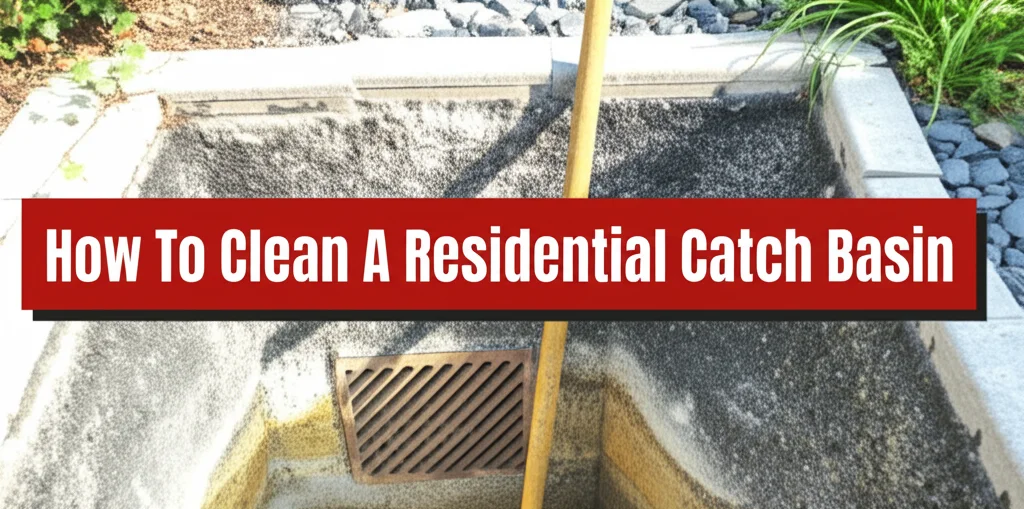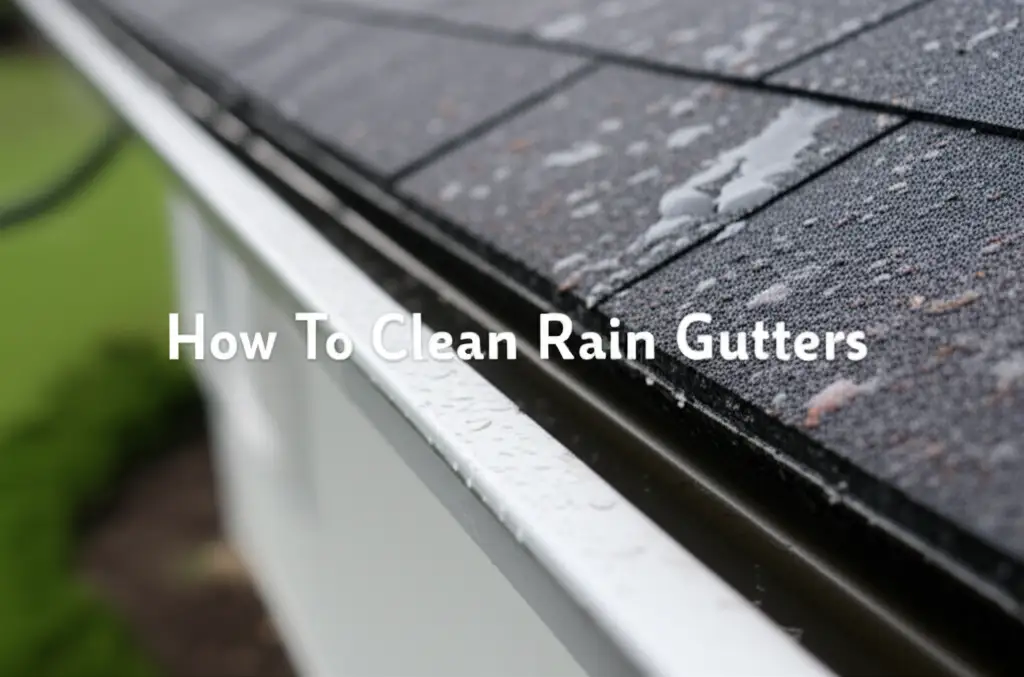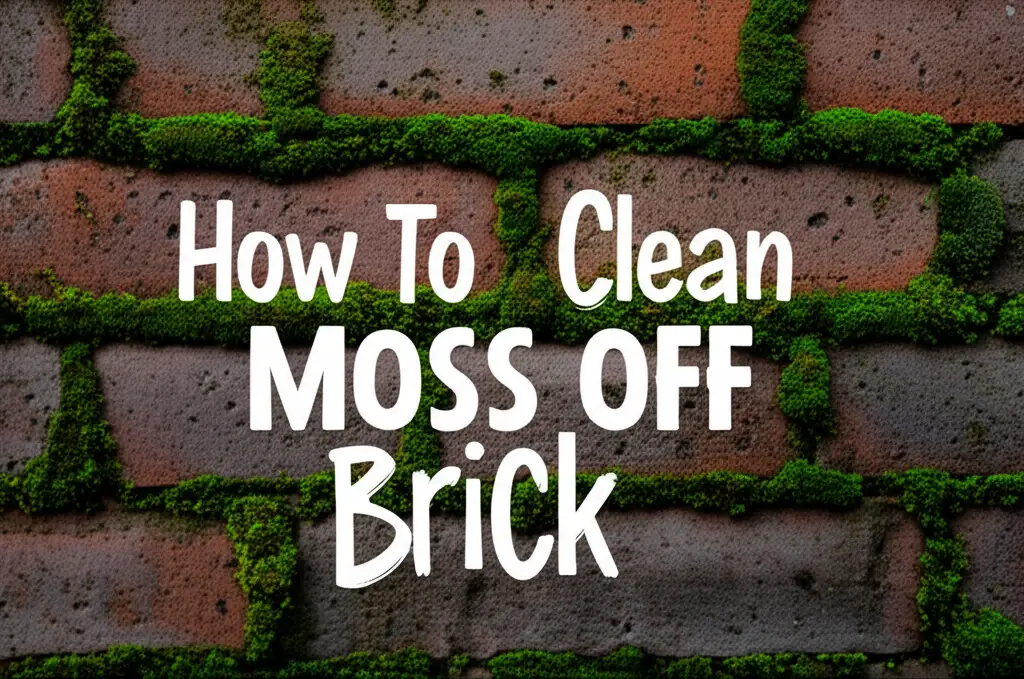· Home Maintenance · 8 min read
How To Clean A Residential Catch Basin

Keeping Your Property Dry: How To Clean A Residential Catch Basin
Have you noticed water pooling in your yard after a rainstorm? A clogged catch basin could be the culprit. A residential catch basin is a vital part of your property’s drainage system, designed to capture debris and prevent it from entering and clogging your underground pipes. Learning how to clean a residential catch basin is a simple task that can save you from expensive plumbing repairs and potential water damage. This guide will walk you through the process, step-by-step, ensuring your drainage system functions efficiently. We’ll cover everything from the tools you’ll need to the best practices for maintaining these essential components of your home.
Takeaway:
- Regularly inspect your catch basins.
- Remove debris before it compacts.
- Use appropriate safety gear.
- Consider professional cleaning for stubborn clogs.
A catch basin is essentially a filter for your yard’s drainage. It prevents leaves, dirt, and other debris from entering the storm drain system. Without proper maintenance, these basins fill up, reducing their effectiveness and potentially causing flooding. This article will show you how to keep them clear and functioning as they should.
What is a Residential Catch Basin and Why Clean It?
A residential catch basin is a concrete or plastic box, typically located in your driveway or yard, with an open grate on top. It connects directly to your storm drain system. Its primary function is to trap sediment and debris before they can enter the pipes. Cleaning your catch basin is crucial for several reasons. First, it prevents clogs in your drainage system, which can lead to standing water and potential property damage. Second, it helps maintain the efficiency of your local storm drain system, preventing overflows and contributing to community-wide flood control. Finally, regular cleaning can extend the lifespan of your drainage pipes, saving you money on costly repairs in the long run.
Tools You’ll Need for Catch Basin Maintenance
Before you begin, gather the necessary tools to make the job easier and safer. You won’t need anything overly complicated, but having the right equipment is key. Here’s a list of what you’ll need:
- Gloves: Protect your hands from dirt, bacteria, and potential sharp objects.
- Safety Glasses: Shield your eyes from splashing water and debris.
- Sturdy Shoes: Provide good traction and protect your feet.
- Bucket: For collecting the removed debris.
- Garden Trowel or Scoop: To remove the accumulated sediment.
- Heavy-Duty Garden Hose with Spray Nozzle: For flushing out the basin.
- Leaf Rake or Small Hand Rake: Helpful for loosening packed debris.
- Optional: Wet/Dry Vacuum: For removing stubborn, wet debris.
If you’re dealing with a particularly stubborn clog, you might consider a plumbing snake, but start with the simpler tools first. Remember, safety first! Always wear gloves and eye protection. If you’re unsure about any part of the process, it’s best to consult a professional. For more home maintenance tasks, you might find it helpful to learn how to clean a mailbox as part of your regular upkeep.
Step-by-Step Guide to Cleaning Your Catch Basin
Now that you have your tools, let’s get started! Cleaning a catch basin is a relatively straightforward process. Follow these steps for best results:
- Remove the Grate: Carefully lift the grate covering the catch basin. It may be heavy, so use caution.
- Remove Loose Debris: Use your hands (with gloves on!), a trowel, or a rake to remove any loose leaves, twigs, and other debris from the top of the basin.
- Scoop Out Sediment: Using your trowel or scoop, carefully remove the accumulated sediment from the bottom of the basin. Be prepared for this to be heavy and potentially muddy. Place the debris into your bucket.
- Flush with Water: Once you’ve removed the bulk of the debris, use your garden hose with a spray nozzle to flush out the remaining sediment. Direct the water flow around the basin to loosen and remove any stuck-on debris.
- Inspect the Outlet Pipe: Check the outlet pipe for any visible obstructions. If you see a clog, try flushing it with the hose. If that doesn’t work, a plumbing snake might be necessary.
- Replace the Grate: Once you’re satisfied that the basin is clean, carefully replace the grate.
This process should take about 30-60 minutes, depending on how clogged the basin is. Regular cleaning will make future maintenance even easier. Keeping your home clean extends beyond the yard; consider how to clean a mini system for a healthier indoor environment.
Dealing with Stubborn Clogs in Your Catch Basin
Sometimes, despite your best efforts, you’ll encounter a stubborn clog that won’t budge with a hose. Don’t panic! Here are a few things you can try:
- Plumbing Snake: A plumbing snake (also known as an auger) can be used to break up and remove stubborn clogs. Carefully insert the snake into the outlet pipe and rotate it to dislodge the blockage.
- Wet/Dry Vacuum: A wet/dry vacuum can be used to suck out any remaining water and debris.
- Baking Soda and Vinegar: Pour one cup of baking soda followed by one cup of vinegar into the basin. Let it fizz for about 30 minutes, then flush with hot water.
- Professional Help: If you’ve tried these methods and the clog persists, it’s time to call a professional plumber. They have the tools and expertise to handle more complex drainage issues.
Remember to always exercise caution when using tools like plumbing snakes. Avoid forcing the snake, as this could damage the pipe. If you’re unsure, it’s always best to call a professional. Maintaining your home’s exterior is important, and you might also want to consider how to clean the roof to prevent further issues.
How Often Should You Clean Your Catch Basin?
The frequency of cleaning depends on your location and the amount of debris that accumulates in your yard. However, a good rule of thumb is to clean your catch basins at least twice a year – once in the spring after the snow melts and once in the fall after the leaves have fallen. If you live in an area with heavy rainfall or a lot of trees, you may need to clean them more frequently. Regularly inspecting your catch basins will help you determine the best cleaning schedule for your property. Look for signs of standing water or slow drainage as indicators that it’s time for a cleaning.
Preventing Future Clogs in Your Catch Basin
Preventing clogs is always easier than dealing with them. Here are a few tips to help keep your catch basin clear:
- Keep Your Yard Clean: Regularly rake leaves and other debris from your yard to prevent them from being washed into the catch basin.
- Trim Overhanging Branches: Trim any overhanging branches that could drop leaves and twigs into the basin.
- Install a Grate Filter: Consider installing a grate filter over the catch basin to catch smaller debris.
- Regular Inspections: Regularly inspect your catch basin for any signs of buildup and address them promptly.
By taking these preventative measures, you can significantly reduce the frequency of cleaning and keep your drainage system functioning smoothly. A well-maintained yard contributes to a well-maintained home; don’t forget to also consider how to clean a doormat to keep dirt from entering your house.
FAQ About Residential Catch Basin Cleaning
Q: What happens if I don’t clean my catch basin? A: If left uncleaned, a catch basin can become completely clogged, leading to standing water, potential flooding, and damage to your property. It can also contribute to overflows in the local storm drain system.
Q: Can I use a chemical drain cleaner in my catch basin? A: It’s generally not recommended to use chemical drain cleaners in catch basins. They can be harmful to the environment and may not effectively remove the type of debris found in these basins.
Q: What should I do with the debris I remove from the catch basin? A: Dispose of the debris properly according to your local regulations. Typically, it can be composted or disposed of with your regular yard waste.
Q: Is cleaning a catch basin a DIY project? A: Yes, cleaning a catch basin is generally a DIY project that most homeowners can handle. However, if you encounter a stubborn clog or are uncomfortable with any part of the process, it’s best to call a professional.
Conclusion: Maintaining a Healthy Drainage System
Cleaning a residential catch basin is a simple yet crucial task for maintaining a healthy and functional drainage system. By following the steps outlined in this guide, you can prevent clogs, protect your property from water damage, and contribute to the overall efficiency of your local storm drain system. Remember to inspect your catch basins regularly and clean them at least twice a year. Don’t underestimate the importance of preventative maintenance! Taking a little time to care for your catch basins can save you a lot of trouble – and money – in the long run. If you’re looking for other ways to improve your home’s upkeep, you might also want to explore how to clean a copper still for specialized cleaning tasks.
- catch basin cleaning
- drain maintenance
- yard drainage
- gutter cleaning
- home improvement




